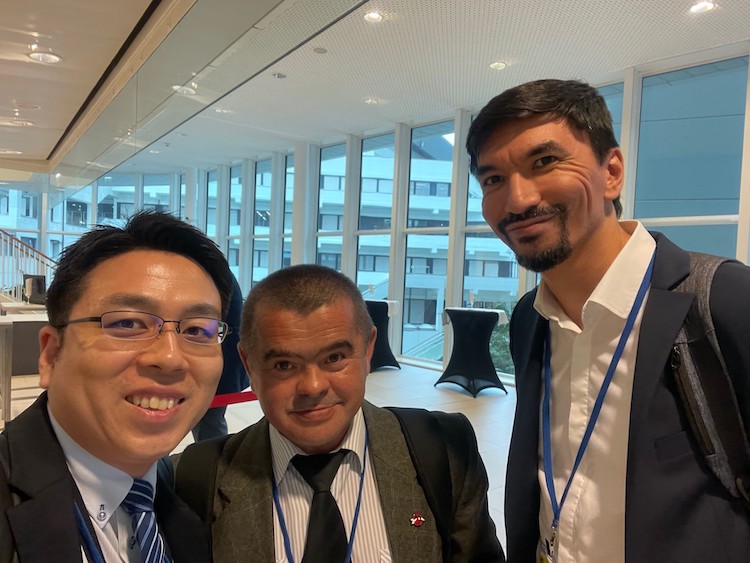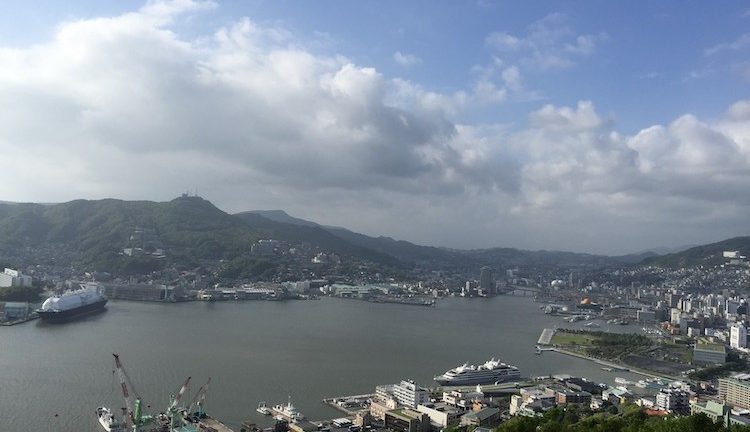By Mitsunobu Takahashi *
VIENNA. (IDN) — The first session of the Preparatory Committee for the 2026 NPT Review Conference was convened from 31 July until 11 August at the Vienna International Centre in Austria. This was my first time to attend such an international conference at the United Nations.
I arrived in Vienna carrying the feelings of so many hibakusha from Nagasaki who have risked their lives to raise their voices, and the hopes of many others who have been tirelessly working to realize a world without nuclear weapons.
Since the last two successive NPT Review Conferences failed to adopt final documents due to disagreements among the states parties, this first session of the NPT PrepCom was expected to be a crucial milestone in order to change the current discourse.
However, after an intense two-week-long discussion on disarmament and non-proliferation, the first session ended without achieving an agreement to adopt the chair’s summary as an official document of the United Nations.
I felt that the voices of global hibakusha and youth need to be heard more than ever.
On the second day of the NPT PrepCom session, I had the opportunity to meet with Mr. Dmitriy Vesselov, a third-generation victim of nuclear testing in Semey City, formerly known as Semipalatinsk, in Kazakhstan. While Kazakhstan was one of the republics of the Soviet Union (USSR), more than 450 nuclear tests were conducted at the Semipalatinsk nuclear test site, affecting 1.5 million people.
When I met with Mr. Vesselov, I shook his hand firmly. He put my hand on his shoulder and told me about his missing bones and how he gave up being a father because he was worried that his unborn child would be affected.
It was the first time for me to meet and talk with a nuclear test victim. I was moved by his determination to continue to share his story with the international community toward the abolition of nuclear weapons, despite the great pain and suffering he has been forced to endure. In fact, through this encounter with him, I felt a strong sense of responsibility to share the experiences and feelings of “global hibakusha”—those who have been affected by the development and use of nuclear weapons—more widely, starting from my own community in Nagasaki.
On 7 August, Soka Gakkai International (SGI) organized a side event titled “In Discussion with Global Youth: Inheriting the Experiences of Hibakusha,” with other youth-focused organizations. Firstly, the participants listened to the testimony shared by A-bomb survivor Ms. Keiko Ogura in English. (The full version of her testimony is available here.)
Next, I participated in a panel discussion with other youth who represented different regions and different backgrounds. During the discussion, we exchanged views on how to raise awareness of the nuclear weapons issue, especially among the younger generation. It was impressive to see the ingenuity and creativity of the youth from other regions, based on their great sense of responsibility.
In Hiroshima and Nagasaki, the average age of hibakusha is now 85 years old, and opportunities to hear their stories in person are decreasing. In that sense, it has become more challenging to pass on an understanding of the reality of the atomic bombings and testimonies of hibakusha to the next generations.
The Soka Gakkai Peace Committee in Nagasaki, which I am part of, published a total of ten books of hibakusha testimonies between 1974 to 2020, containing a total of 314 testimonies. The Peace Committee has also recorded the testimonies of 87 hibakusha on film. In order to gather these first-hand accounts, our youth members interviewed the hibakusha.
At first, the survivors hesitated to share their testimonies because they did not want to remember the horrors they had experienced. However, they were eventually persuaded to share their experiences by the sincerity and seriousness of the young people. This initiative became a crucial opportunity for peace education for the younger generation.
Another educational activity that the Soka Gakkai youth in Nagasaki have organized is the “Peace Walk.” The aim of this activity is to provide the opportunity for children to visit the A-bomb ruins, memorial parks and the Nagasaki Atomic Bomb Museum with their parents. In addition, university students have volunteered to clean up the area around the Nagasaki Peace Park every month, embracing the determination to eliminate the nuclear weapons that represent so much waste from our daily lives.
One of the hibakusha testimonies that shook my soul was that of Nagasaki A-bomb survivor Ms. Toyomi Hashimoto. In June 1982, she visited New York to attend the UN General Assembly’s second Special Session devoted to Disarmament. During her visit, she had a deeply significant encounter with scientists involved in the development of nuclear weapons.
When asked by Professor Bernard T. Feld from MIT if she resented Americans, she responded: “Yes, I bore a grudge against them. I experienced unbelievable suffering. But now, I don’t want people of any country, even Americans, to experience the same suffering as we did.” Her words as a hibakusha inspired me to advocate for the abolition of nuclear weapons.
Today’s youth are the very last generation with the opportunity to hear the firsthand experiences of hibakusha in Hiroshima and Nagasaki due to their advanced age. Even today, there are victims who are suffering the lasting consequences caused by the use and development of nuclear weapons.

From L to R: Mitsunobu Takahashi, Dmitriy Vesselov, a third-generation victim of nuclear testing in Semey City, and Alimzhan Akhmetov, the Founder-Director of the Center for International Security and Policy. Credit: SGI.
In solidarity with other youth around the globe, I am determined to continue engaging in dialogue with those around me and in initiatives with young people in Nagasaki to inherit and pass on the spirit of A-bomb survivors and global hibakusha.
*Mitsunobu Takahashi from Nagasaki, Japan, spoke at a side event during the first session of the 2023 Preparatory Committee for the 2026 Review Conference of the Parties to the Treaty on the Non-Proliferation of Nuclear Weapons (NPT). Titled “In Discussion with Global Youth: Inheriting the Experiences of Hibakusha,” the side event was co-organized by the International Campaign to Abolish Nuclear Weapons (ICAN); International Physicians for the Prevention of Nuclear War (IPPNW); Nuclear Age Peace Foundation (NAPF); Nyuklia Eureka, Reverse the Trend: Save Our People, Save Our Planet (RTT); Soka Gakkai International (SGI) and Youth for TPNW. [INPS Japan/IDN]
Photo 1: Landscape of Nagasaki City Credit: SGI
Photo 2: From L to R: Mitsunobu Takahashi, Dmitriy Vesselov, a third-generation victim of nuclear testing in Semey City, and Alimzhan Akhmetov, the Founder-Director of the Center for International Security and Policy. Credit: SGI.




